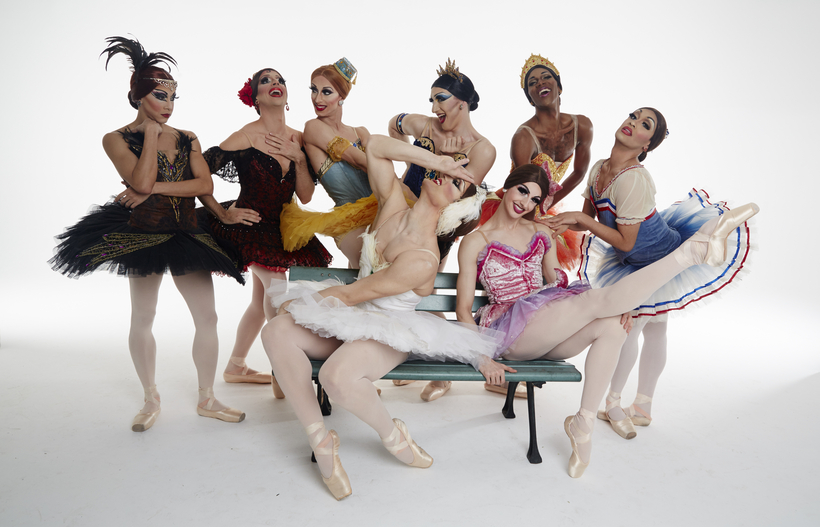“It’s sort of surprising that the company has lasted 40-plus years,” says the choreographer Peter Anastos, “but the idea was very strong.” Anastos is speaking of Les Ballets Trockadero de Monte Carlo, the all-male comedic ballet troupe he co-founded in 1974 and directed for decades. “Guys in tutus are funny for about 30 seconds. After that, they have to actually do something and have really good material.”
That really good material consists of lovingly fractured excerpts from classics such as Giselle and The Nutcracker as well as sharp and savvy parodies like Go for Barocco, Anastos’s jaw-dropping 1975 deconstruction of George Balanchine’s 1941 masterpiece Concerto Barocco.

It felt a little subversive back then, with liberation movements detonating all around, to rush off to watch “the Trocks”—as we called them—bust norms in a second-story loft on far west 14th Street. But it turned out that the campy yuks over butch ballerinas came with dazzling insights into the structure, style, and traditions of the world’s greatest choreography.
Talk about a coup.
“Guys in tutus are funny for about 30 seconds. After that, they have to actually do something and have really good material.”
At the company’s current engagement at the Joyce Theater, the new ballet Nightcrawlers—another probing homage—sees three love duets set to Chopin nocturnes. Those in the know will know it is a witty revision of In the Night, a 1970 work by Jerome Robbins.

“If you’ve been around long enough to know the Trocks from the start, then you know Yes, Virginia, Another Piano Ballet,” says Anastos. He’s referring to another of his early Trock hits, created for the company’s Broadway debut, in 1976. This one was also inspired by Robbins, his 1969 masterpiece Dances at a Gathering, and is also set to Chopin. “Nightcrawlers is a bookend to Yes, Virginia,” Anastos explains. “It is deeper, goes further into the valley of Jerome Robbins.” Like Go for Barocco, it is not a send-up. When Anastos invokes Robbins, he does so with love for the original work, and respect.
“Robbins doesn’t do fairy tales,” says Anastos. “He always deals with real people with real emotions and real relationships. That gave me a platform to take off, to make it very funny with dysfunctional relationships. There’s something about Robbins that defined all the periods he worked in. On the Town defined the 50s. Dances at a Gathering defined the 60s and 70s. Later work defined the 80s. He had a way of capturing the Zeitgeist, and I think that was his strength as a choreographer.”
Those of us who lived through the emergencies of the 1970s—societal, sexual, cultural—are gratified to see that some of the early responders are still around. And that a dance troupe conceived as “a form of resistance,” as Anastos says, is now a main-stage holiday attraction, well, that’s just another sugarplum dancing in our heads. —Stephen Greco
Les Ballets Trockadero de Monte Carlo is at the Joyce Theater, in New York City, through January 2


 Discover
Discover